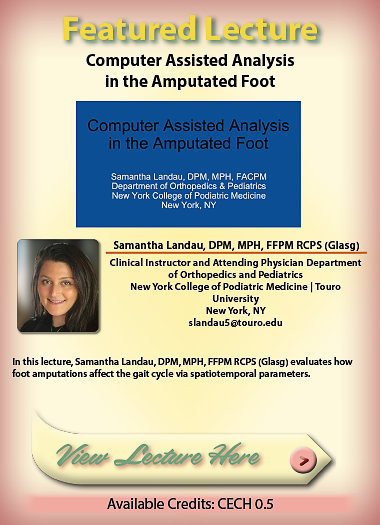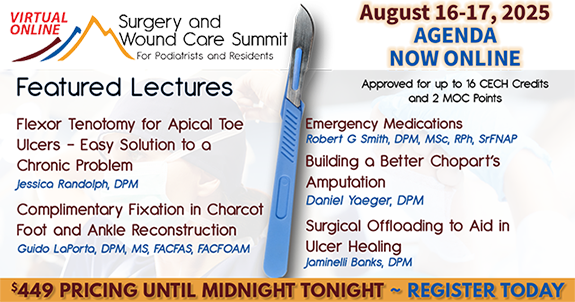
Sole Purpose 69
Lost in Translation: How Language Gaps Undermine Patient Care
Lost in Translation: How Language Gaps Undermine Patient Care

Effective communication is the bedrock of safe, compassionate, and equitable healthcare. Yet for millions of patients across the United States, that foundation is compromised simply because they do not speak English or have a low proficiency in English. In a country as linguistically diverse as ours — where one in four patients comes from a non-English-speaking household — language barriers are not a fringe issue.1,3 They are a central challenge that directly affects health outcomes, patient safety, and trust in the medical system.
As medical providers, we spend years learning to diagnose, treat, and manage disease. But none of that knowledge can be meaningfully applied if our patients don't understand us — or worse, if we mistake politeness or confusion for comprehension. When language becomes a barrier, miscommunication can lead to delayed care, inappropriate treatment, unnecessary suffering, and even death.2,3,5 And yet, in the hustle of daily hospital life — with all its time pressures and logistical hurdles — interpreter services are often underutilized or dismissed as an inconvenience.4
I understand the temptation. I’ve felt the frustration of waiting over an hour in the emergency department for a translator who was supposedly just “five minutes away.” I’ve watched the clock, mentally juggling my to-do list, wondering if it was really worth the delay. But every time I face that dilemma, I return to a simple question: What if it were me, or someone I loved, in that hospital bed, unable to understand what was happening?
This article is a call to pause — to reflect on how we, as healthcare professionals, show up for patients with limited English proficiency. It’s about the power of language, the legal and ethical responsibilities we carry, and the human stories behind every nod that hides confusion, behind every smile that masks fear. It is about why interpreter services are not optional — they’re essential.


Studies have shown that the use of professional translation services is associated with better postoperative outcomes, lower infection rates, improved management of chronic diseases, reduced blood pressure, and even lower cancer mortality rates.2,5 The benefits go beyond clinical outcomes. Non-English-speaking patients who receive interpreter services experience shorter hospital stays, report greater trust and confidence in their healthcare providers, and make fewer emergency department visits — all contributing to lower rates of readmission.4
In short, using a translator leads to better outcomes, better care, and healthier patients. It may be inconvenient, yes — but it is absolutely worth it.
There’s also a legal and ethical obligation. Title VI of the Civil Rights Act of 1964 prohibits discrimination based on national origin, which includes language. This mandates that any organization receiving federal funds must provide meaningful access to services for individuals with limited English proficiency (LEP). Section 1557 of the Affordable Care Act reinforces this requirement, specifically addressing language access in healthcare and obligating federally funded providers and insurers to offer qualified interpreters and translated materials for LEP patients.3
At the end of the day, if you choose not to use interpreting services for a patient with limited English proficiency, ask yourself this: Are you prepared to stand in front of a judge and justify why you didn’t? Would you feel confident defending your decision to rely on basic high school Spanish for critical medical care?
Language access isn’t just a legal box to check — it’s a cornerstone of equitable, compassionate healthcare. What I always come back to is this: if I, or someone I deeply cared about, were in a hospital in another country, I would want to understand what was happening. I would want to know what the doctors were saying, what decisions were being made, and what the plan was moving forward. That’s not just a desire — that’s a right.


I recently cared for a Spanish-speaking patient who was visiting her son from Guatemala. When I went to round on her in the hospital, there was a translation iPad at her bedside — she spoke no English at all. Another medical team entered the room and began explaining her condition in English as I dressed her foot. She smiled and nodded politely throughout the entire conversation. After they left, I asked if she understood what they had said — specifically, that she needed to start dialysis. She admitted she hadn’t understood a word. She just didn’t want to seem rude or be an inconvenience to her care team.
In many cultures, doctors are held in high esteem. Patients don’t want to waste their time or ask for clarification. This patient didn’t want to be a burden to the team. The interpreter device was right there. It just wasn’t used — simply because someone assumed that a nod meant understanding. No one paused to confirm that she truly grasped what was being explained.
With every patient — English-speaking or not — I make it a point to ask them to repeat back their understanding of their condition and the next steps. Medical literacy varies widely, and most patients haven’t been trained in the language or systems of medicine like we have. They deserve clarity. They deserve to understand.
Something else I see far too often is healthcare providers attempting to speak broken or basic Spanish (or another language) during medical visits because it feels "faster" or "easier." But a patient encounter is not the time to practice your high school Spanish. It’s not about your language skills — it’s about the patient’s right to accurate, clear communication.1 I don’t care if you have a 100-day Duolingo streak — that patient has a legal right to a qualified interpreter, not to struggle through a conversation with someone who is barely conversational in their language.


Yes, it’s admirable that more providers are learning second languages — I genuinely support that and highly encourage it. But knowing a few key phrases is not the same as being qualified to navigate complex, nuanced, and emotionally charged medical discussions. And patients are often too polite or deferential to tell you what they’re really thinking: They can’t understand you.


This isn’t about ego. I hold a degree in Spanish language and culture, I worked as a Spanish language tutor and teacher, I passed my medical Spanish interpretation certification, and I grew up speaking Spanish — and I will still call for a professional translator if that’s what the patient prefers or if there is any doubt the patient properly understood me. Why? Because it’s not about me. My ego will never be more important than a patient’s right to understand what’s happening with their body.
A common argument that I hear is that “the translators at the hospital aren’t good.” While I can’t personally vouch for the skill level of every individual interpreter, this generalization misses the point. Most hospitals now offer multiple interpretation options — including in-person interpreters, video remote interpretation (often via iPad), phone-based services, and even certified third-party vendors.4 With this range of choices, it's highly unlikely that none of these resources provide access to a competent, qualified interpreter.
Are all interpreters perfect? Of course not. Just like with any profession, skill levels can vary. But dismissing the entire system based on isolated negative experiences does a disservice to the many trained professionals who work hard to bridge the communication gap. Moreover, the solution isn’t to abandon the use of interpreters altogether — it’s to advocate for better quality assurance, increased training, and improved workflows that prioritize language access.


It’s also worth noting that professional interpreters — even if not flawless — are still far better equipped to navigate complex medical conversations than providers relying on broken language skills or making assumptions about a patient’s comprehension.5 Using trained interpreters is not about perfection; it’s about significantly reducing risk, improving clarity, and honoring a patient’s legal and ethical right to understand their own care.


Language access is not a luxury — it’s a fundamental component of safe, ethical, and patient-centered care. As healthcare providers, we have both a moral and legal obligation to ensure that our patients understand their diagnoses, treatment plans, and options. Interpreter services may take time, may test our patience, and may not always feel convenient — but the alternative is a system where patients are left confused, vulnerable, and at risk.
At the heart of medicine is human connection. And without understanding, there can be no connection. We owe it to every patient — regardless of the language they speak — to do better.
- Crezee IHM, Roat CE. Bilingual Patient Navigator or Healthcare Interpreter: What’s the difference and why does it matter? Cogent Med. 2019;6(1):181087776.
Follow this link - Diamond L, Izquierdo K, Canfield D, Matsoukas K, Gany F. A Systematic Review of the Impact of Patient–Physician Non-English Language Concordance on Quality of Care and Outcomes. J Gen Intern Med. 2019 Aug;34(48):1591-1606.
Follow this link - Escobedo LE, Cervantes L, Havranek E. Barriers in Healthcare for Latinx Patients with Limited English Proficiency—a Narrative Review. J Gen Intern Med. 2023 Apr;38(5):1264-1271.
Follow this link - Interpreter services and effect on healthcare – a systematic review of the impact of different types of interpreters on patient outcome. J Migr Health. 2023 Jan 24;7:100162 Accessed May 8, 2025.
Follow this link - Joo H, Fernandez A, Wick EC, Lepe GM, Manuel SP. Association of Language Barriers With Perioperative and Surgical Outcomes: A Systematic Review. JAMA Netw Open. 2023 Jul 3;6(7)\:e2322743.
Follow this link


























Comments
There are 0 comments for this article